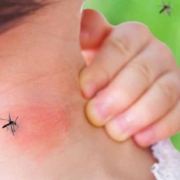How Do Mosquitoes Impact Life in Collier County?

By Patrick Linn, MS, MSHAPI
Executive Director, Collier Mosquito Control District
It’s fair to say that most Floridians today have lost their fear of mosquitoes. The days of rampant, deadly mosquito-borne disease outbreaks in Florida are merely long ago events we learn about in history books.
Yet, the tiny mosquito continues to kill more than 700,000 humans worldwide each year, making it the deadliest animal on the planet. Diseases such as Yellow Fever, Dengue, Malaria, and West Nile virus claim thousands of lives each year.
Collier County residents and visitors today no longer dread mosquito-borne threats as early Southwest Florida settlers did, thanks in large part to the state’s mosquito control agencies which were constitutionally created. Supported by an ad valorem tax assessed to those who lived within the 6 square miles of Naples in 1950, a single fogger mounted on the back of borrowed truck heralded the humble beginnings of Collier Mosquito Control District.
Mosquitoes still impact our daily lives in Southwest Florida. As of today, the District’s scientists have identified more than 50 different mosquito species in our area. Of those, five are closely monitored because of their ability to carry diseases, including West Nile virus, Dengue, Yellow Fever, Eastern Equine Encephalitis, and St. Louis Encephalitis.
During the past three years, the District has battled these species to prevent outbreaks of West Nile virus and Dengue after the diseases were found in local mosquito populations. The District’s scientists trap and test mosquitoes weekly in our onsite laboratory for the presence of viruses. As well, the District is notified immediately by the Florida Department of Health when a human case of mosquito-borne disease is diagnosed in our county. In both cases, evidence of disease in mosquito populations requires the District to quickly take action to prevent an outbreak.
Some mosquito species don’t pose a risk to human health, but can greatly impact comfort, such as the nuisance Salt Marsh Mosquito. They hatch in the spring when king tides rise in the coastal mangroves. These Aedes taeniorhynchus emerge by the Millions in thick clouds of swarming, hungry mosquitoes, and can travel more than 40 miles on winds.
During the late 1980s, dense populations of the Salt Marsh species killed cattle in southern Collier County by clogging their airways. Their aggressive biting behavior and immense numbers can greatly affect the quality of life of those living along the Gulf Coast. When Salt Marsh mosquito populations become excessive, the District acts quickly to reduce their numbers.
An abundance of water and nearly year-round subtropical temperatures mean that mosquitoes will always be endemic to Southwest Florida. Without mosquito control efforts, it’s doubtful that Neapolitans could enjoy dining al fresco or bask on our beautiful beaches. Real estate values would be dramatically lower, and our tourism industry would suffer. One can easily surmise that without mosquito control (and air conditioning), living in Southwest Florida would not be desirable.
Want to know more about the science or operations of mosquito control? Call us to arrange tour for your group! Need an informative presentation at your group’s next meeting? We can be there!
Visit the District’s website at cmcd.org or call 239.436.1000.




Leave a Reply
Want to join the discussion?Feel free to contribute!